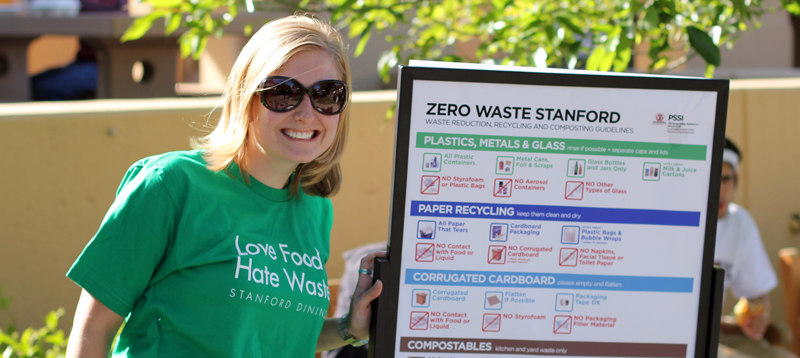New Central Energy Facility
The new Central Energy Facility (CEF) includes three large water tanks for thermal energy storage, a high-voltage substation that receives electricity from the grid, and an innovative heat recovery system that takes advantage of Stanford’s overlap in heating and cooling needs. Unlike the previous fossil-fuel-fired combined heat and power plant, the CEF is powered by electricity, which Stanford has commited to procure from renewable geothermal and solar power plants. In addition to the mechanical operations, the facility also includes administrative, classroom and meeting space that contribute to the educational component of the plant. As is true throughout the facility, these spaces also feature the latest in efficient design. Sustainable highlights include:
- LED lighting throughout
- An open-air floor plan, with high ceilings, fans and windows on each side of the building to facilitate cross breezes
- Flooring that utilizes radiant heat and chilled beam systems for heating and cooling
- Ceiling panels with energy absorbing filler that absorbs heat, and as the room cools off it releases it for heating purposes
Key Components
Heat Recovery Chillers
The Heat Recovery Chillers are the star of the facility.
Thermal Storage Tanks
While the recovery of heat and new efficient equipment is the key to the system’s energy efficiency, thermal storage is the key to its economic efficiency. Thermal storage tanks allow flexibility to operate the heat recovery chillers and other equipment at times with the lowest energy pricing and then store the hot and cold water for later use when the buildings need it. Thermal tanks also contribute to the system’s energy efficiency by allowing the equipment to run at optimal load settings, and, in the case of regular chillers—which are incorporated into the facility as backup for peak-load days—when outside air temperatures and humidity favor evaporative cooling. The capacity of each chilled water tank is 5 million gallons, and the hot water tank holds 2.3 million gallons.
High-Voltage Substation
The substation runs on two different transmission feeds from both the north and south to power all of the core Stanford campus, not including faculty housing. About 1/3 of the electricity consumed at Stanford will be used to operate the new plant, while the rest will supply power to buildings. The substation is designed to handle about twice Stanford’s current load or about 100 MW, which is enough to power about 100,000 homes. This is both for redundancy and to allow room for growth in the future. The facility also has an emergency generator for powering emergency lighting, elevators, safety systems, and even provides enough power to operate the thermal energy storage tank pumps to provide hot and cold water for the hospital during emergencies.
Control Room
To assure optimal operation of the CEF for both service reliability and economic performance, Stanford invented a new central energy plant optimization program.







